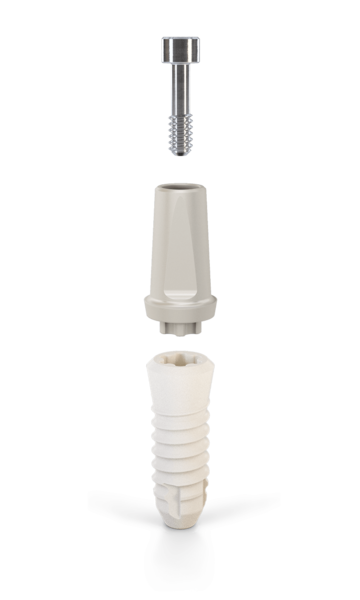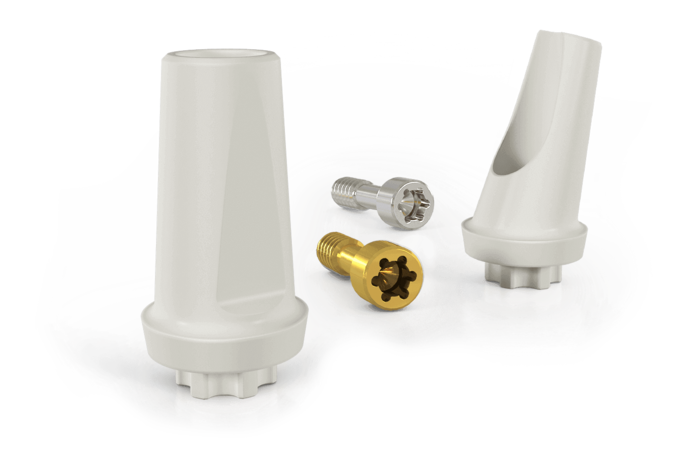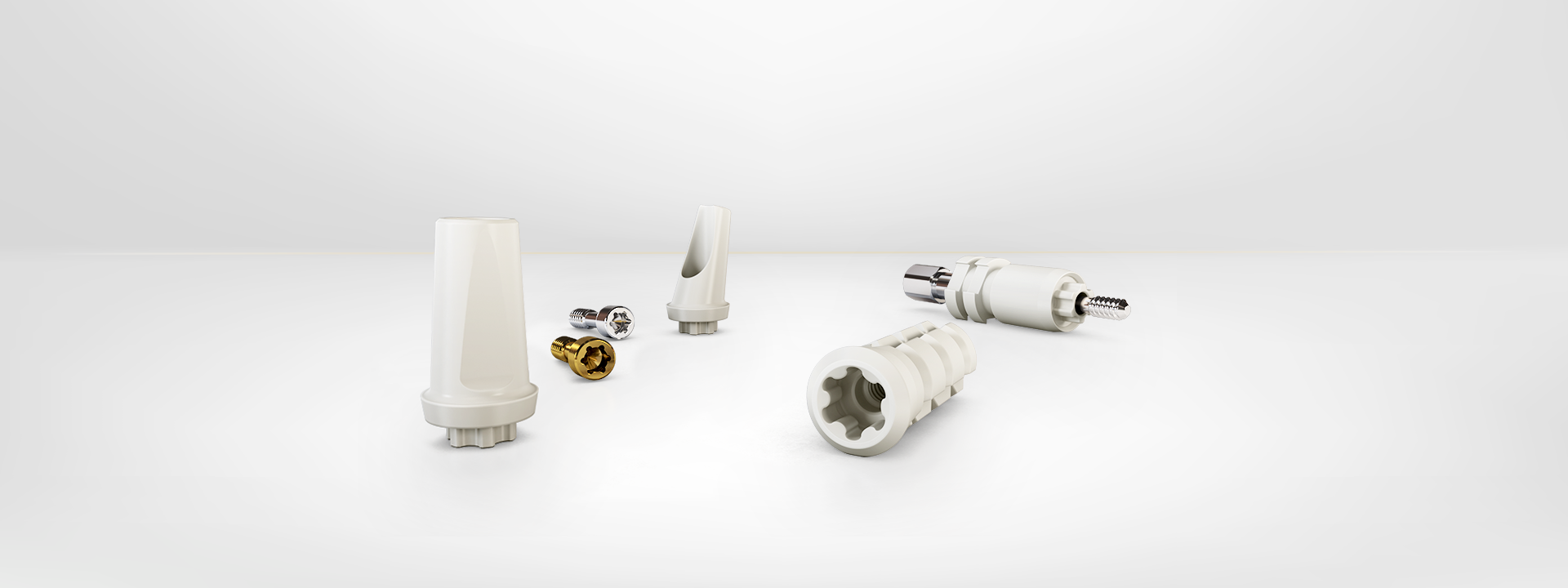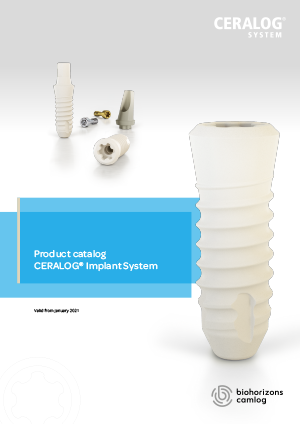CERALOG Abutment – innovative and made from PEKK high performance polymer

The CERALOG Implant System comprises straight and angled abutments made of the high performance polymer ether ketone ketone (PEKK). The abutments are fixed in the implant either with a titanium or gold screw. PEKK has a light color and is easy to process with conventional burs equipment.
The PEKK high performance polymer
PEKK belongs to the poly aryl ether ketone (PAEK) family. These are high performance thermoplastics which are required and used for extreme conditions, for example, in automotive engineering, the aerospace industry as well as medical engineering. Thanks to their chemical structure, they offer excellent tensile strength, rigidity and hydrolysis resistance.
In addition to its long-standing use in orthopedics, PEKK also covers a broad spectrum of indications in dentistry. The ductility of PEKK reduces the stress factor on the implant and simulates a tooth-like behavior.
CERALOG Components for soft tissue management

The CERALOG Hexalobe implant set includes a cover cap which is inserted in the Hexalobe connection for the duration of the healing period. As an option, the implant can be covered with a cover screw.
Both implants can be used for both open as well as submerged healing. Healing abutments in two heights and two diameters as well as a temporary abutments are available for soft tissue shaping. These components are made of PEEK and are used for a limited time.
CERALOG Impression taking
With the use of a transfer cap or transfer post, impressions of CERALOG Hexalobe implants can be taken both with closed tray as well as open tray.
PEEK versus PEKK
The more familiar high performance polymer poly ether ether ketone (PEEK) has been employed in dentistry for many years for temporary restorations, for scanning and as impression posts. This also belongs to the PAEK group of polymers (poly aryl ether ketones). The synthesis of PEKK was started in 1962 by the DuPont chemicals group, which since then has refined polymerization over the following decades.
The later PEKK synthesis was adapted by Oxford Performance Materials and Arkema, who initiated market introduction of the material into numerous industry segments. The major advantage of PEKK over PEEK is the higher creep resistance and its compression resistance under stress loading.

